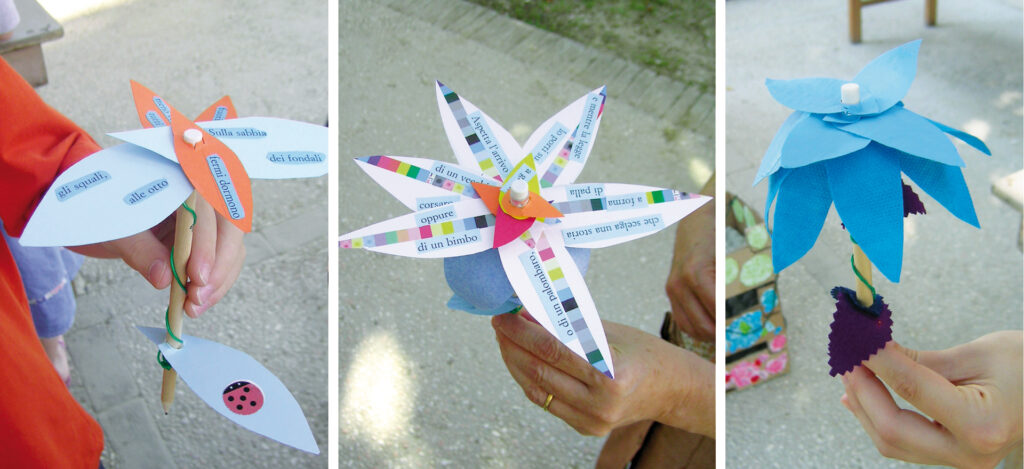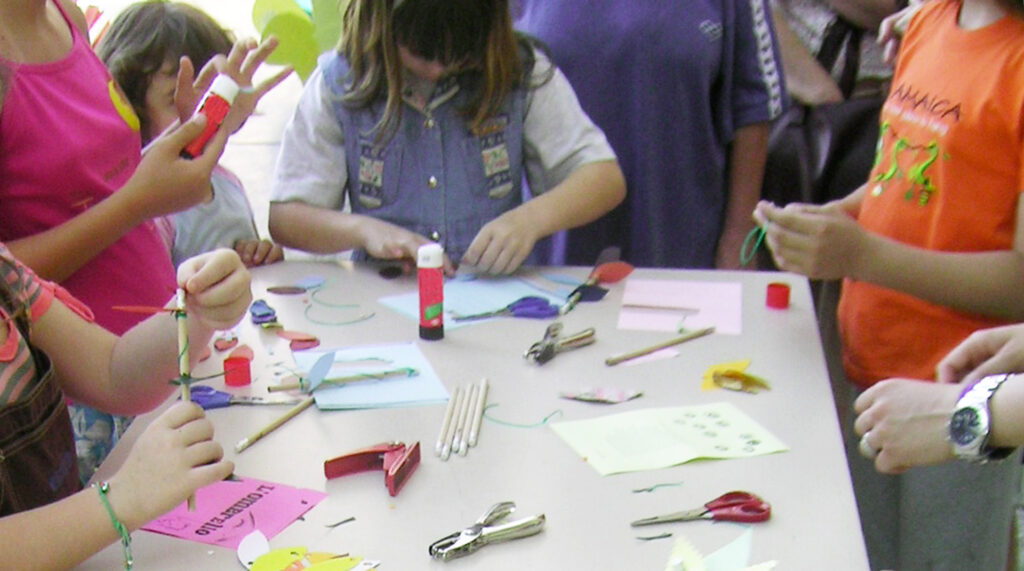When can a process be defined “creative”? What does it mean “to be creative”? It is a very complex subject and there are several definitions. I have chosen one I like. The French mathematician Henry Poincaré defined creativity as “the capacity to join scattered elements in new and useful combinations”. This means that a creative result establishes a useful link between elements that were already known before but apparently unrelated.
It often happens that we can not choose the starting elements, we just have them; but – according to Poincaré – this does not limit our creativity, as it comes from the quality of the relations: from the way to put together the elements rather than from the elements themselves.
Let’s see how this theory can be applied to a concrete example from my work. Many years ago, I was asked to project a workshop in a public library. Of course, there were some established conditions I had to consider: the workshop was supposed to last about one hour, for children from 6 to 10 years old, celebrating the library’s birthday and using simple stationery or recycled materials (paper, fabric, plastic bottles, pensils, markers, scissors, glue). Moreover, we had a large amount of pencils available (thanks to a sponsor).

Starting from these initial elements, the workshop idea I found was a “writing-flower”, built with a pencil and paper or fabric petals. It was also possible to cut and paste words from photocopied papers with poems, that were placed in some carboard trees (you can see these trees in the post “Technique or imagination?” clicking here). At the end of the workhop, children could give some of the flowers to the library users as an unexpected gift.
The writing-flower holds together all the initial conditions in a useful and pleasant way: it exploites the materials’ potential, it is appropriate to the age of the children and to the duration of the workshop, connected to the specific place of the library (as it concerns writing) and to its birthday, as flowers are typical gift-objects.
How did this idea originate? It was not a sudden inspiration but formed through the observation of the initial elements, that suggested which solutions were possible and which not, which one fitted better to all the conditions.
For example, we had a lot of pencils: what does a pencil suggest by its shape? Or thinking about the library’s birthday: what kind of object could be preferably used as a gift for a birthday’s celebration?
If an idea does not meet all the conditions, it has to be discarded, even if sometimes it is not easy to leave it.

The choice of how to present materials is an important part of the project. In this case, I chose to make available pre-cut shapes because we had a short time, so I preferred to simplify the construction and focus on composition, formal or chromatic choices, combinations of different flowers.
The worshop went well and they asked me another one, with the same theme but a bit different. I designed other pencil-flowers using another recycled material: plastic bottles. If you are interested in, have a look to the post “The grammar of plastic bottles” clicking here.
Finally, I think that the design process of this workshop can be defined “creative”. Nevertheless, was the workshop a creative experience itself for the children (according to the initial definition)? I think that in the flowers’ construction creativity had a relatively small component, as well as there was a small margin of choice (concerning colours, shapes and sequences of petals). After all, the aim of the laboratory was not the development of creativity and children enjoyed the experience very much.

So I think that an handmade or artistic activity is not necessarily “creative” (it is a common stereotyped idea). Of course, it is important to share the same definition of creativity as well.
Some years later, it happened that I proposed a workshop about pencil-flowers in a very different context, where the partecipants were asked to develop a more creative process. In that case, we had a longer available time and the theme of “words” was not connected to the context. I invited the partecipants to explore different kind of paper in order to create different shapes of flowers. We used colored pencils, so that the color itself could inspire a certain kind of flower.


Coming back to the initial definition of creativity (as the capacity to join scattered elements in new and useful combinations), there is something Poincaré discovered about it that surprised me very much: the intuitive criterion to recognize the usefulness of the elements’ combination is its beauty. In other words: the most useful idea is also the most beautiful.
Isn’t it amazing?
Enjoy it and have good creative processes!


